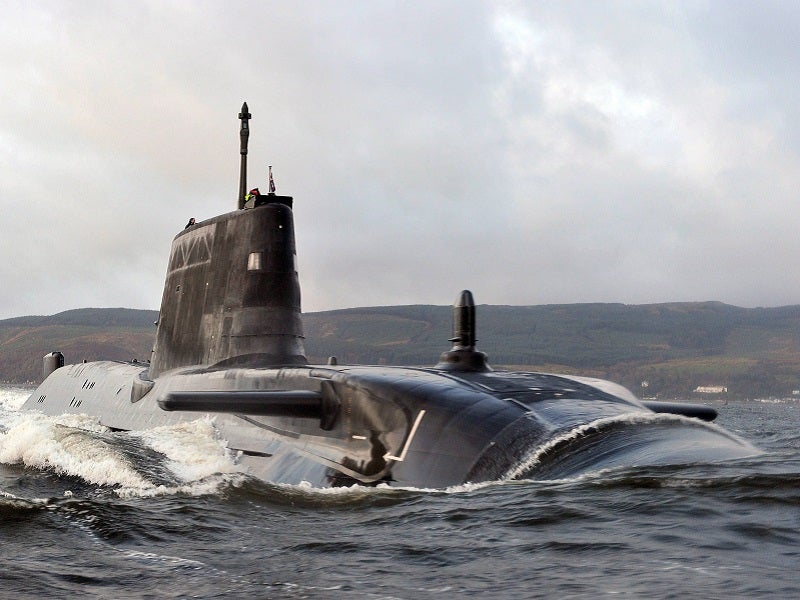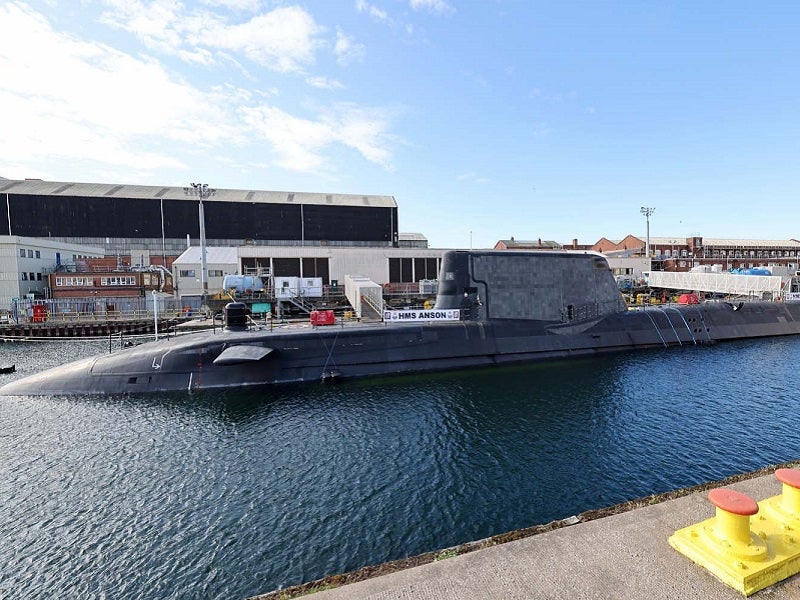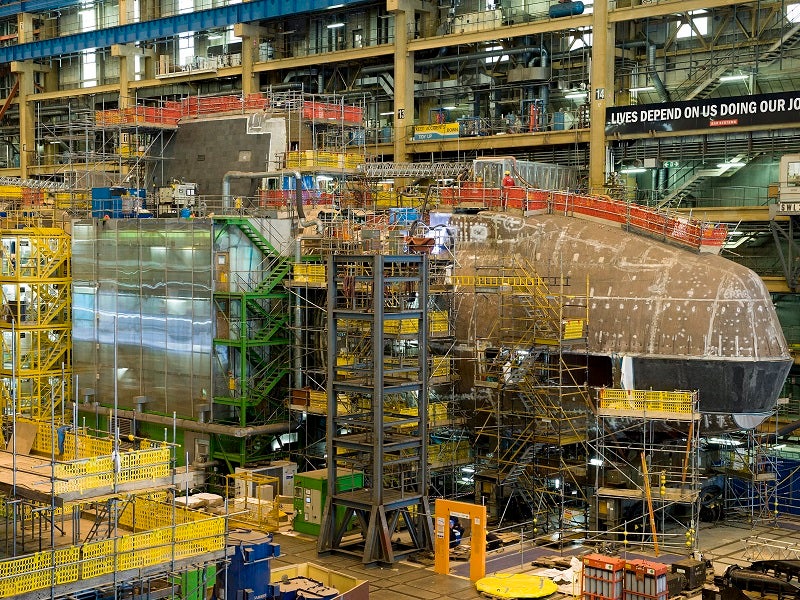
The burgeoning defence relationship between the UK and Australia has been expanded with the revelation that Royal Australian Navy (RAN) submariners will train with their UK counterparts on the newest submarine to enter the UK Royal Navy’s (RN) fleet, the nuclear-powered hunter-killer HMS Anson.
On 31 August the UK commissioned into service HMS Anson, the fifth of seven planned Astute-class SSNs, at a ceremony at the BAE Systems site in Barrow-in-Furness, UK. Stated by the RN as costing £1.3bn to build, the platform is more likely around the £1.4-1.5bn mark, in line with estimates for the last three in class.
Present at the commissioning was the usual array of UK military and government figures. However, the event also drew the attendance of the outgoing UK Prime Minister Boris Johnson, along with the Australian Deputy Prime Minister Richard Marles.
Marles – who is also Minister for Defence – was present in Barrow having also seen the UK Type 26 frigate shipbuilding facility in Govan on 30 August, accompanied by the UK’s First Sea Lord, Admiral Ben Key.
In a 31 August release, the UK Ministry of Defence (MoD) stated that Australian submariners will join RN crews to train on HMS Anson, serving to further strengthen the AUKUS trilateral defence and security agreement between the UK, Australia, and the US.
In the MoD release it was revealed that the UK and US have already welcomed RAN personnel on their specialised nuclear training courses, with more to follow in 2023, before Australian submariners go to sea. The training and exchanges mark the beginning of a “multigenerational naval partnership” between the three AUKUS nations, it was stated.

Of the commissioning, UK Secretary of State for Defence Ben Wallace said: “Today is a significant milestone in the UK and Australia’s preparation to confront growing threats to the liberal democratic order, especially in the Indo-Pacific.
“Not only have we progressed our defence planning but Minister Marles participated in the commissioning of our latest attack submarine, on which will Royal Australian Navy submariners will be embarked as we develop our shared capabilities in the years ahead.”
HMS Anson is the fifth of the new Astute-class submarines to join the RN fleet, alongside Astute, Ambush, Artful and Audacious. Boats six and seven, bearing the notable names of Agamemnon and Agincourt, are also in build and will be handed over to the RN by the end of 2026.
The submarine was rolled out of the Devonshire Dock Hall in Barrow in April last year and lowered into wet dock, since when engineers and crew have been working on her systems and testing equipment. In February 2022, the boat conducted a dive in Barrow to ensure the dive/surface systems and ballast tanks, depth sensors and sonars were in full working order and the vessel was balanced and stable when submerged.
HMS Anson will remain in Barrow for the coming weeks while undergoing final checks and testing to the complex systems that make up a nuclear-powered submarine, before sailing to HM Naval Base Clyde in Faslane to prepare for sea trials.
Once operational, HMS Anson will be armed with up to 38 Spearfish heavyweight torpedoes and Block V Tomahawk land attack missiles, able to tackle targets at a range of up to 1,000 miles. Powered by a Rolls-Royce nuclear reactor, the 97m-long boat will be operational for 25 years without refuelling.
Benefits of the AUKUS pact
James Marques, associate aerospace, defence and security analyst at GlobalData, said that the AUKUS pact was “growing” following the commissioning of the latest vessel in the ongoing £11.2bn Astute-class submarine programme, and comes after the UK’s decision in 2021 to share nuclear propulsion technology with Australia.
“Australia plans to leverage American and British technology to operate a fleet of eight nuclear-powered submarines, joining an exclusive club of only six nations with such boats. Inducting Australian sailors on Anson begins the long and complex process of acclimatising the RAN to the demands of operating these highly technical vessels,” said Marques.
Information from GlobalData reveals that the Australian defence budget has grown consistently since 2020 and is expected to reach $44bn by 2027.
“BAE Systems Australia has only just commenced construction on the first of a new fleet of [British-designed] Hunter-class frigates. Defence cooperation between Australia and the UK makes sense from a strategic perspective and spreads costs for R&D-intensive projects such as hypersonic missiles and AI. It may also serve as a foundation for the UK to more widely enter Asia-Pacific markets, where the naval vessels market alone is expected to value $15bn by 2032,” Marques said.

Details regarding Australia’s eventual procurement of its own SSN fleet are still be to determined, with a senior US Navy official commenting recently that building them at sites in the US or UK would have an impact on their own national programmes.
Shipyards capable of nuclear warship manufacture in the US are currently occupied building the Virginia SSNs and Columbia-class ballistic missile submarines (SSBNs), while the BAE Systems site at Barrow, UK, still has to complete boats six and seven of the Astute class, as well as the Dreadnought-class SSBNs, which will replace the current Vanguard class.
With the design and build times of SSN vessels taking many years – the keel of HMS Anson was laid down in October 2011 – it is unclear when Australia could conceivably begin to operate its own nuclear submarines. While Canberra operates a fleet of diesel-electric submarines at present, the complexity of operating and sustaining a nuclear fleet presents a significantly greater challenge.
One possibility is that Australian crews persist with training on UK submarines, which have a global operating footprint and could conceivably be active in the Asia-Pacific region. Further down the line, the RN could look at forward basing an Astute-class submarine, possibly Anson, in the Asia-Pacific region itself to expand the UK footprint in the region and in turn provide greater opportunity for Australian crews to gain experience in their main areas of operations.




